Little Red Riding from Lighter to Darker Hood
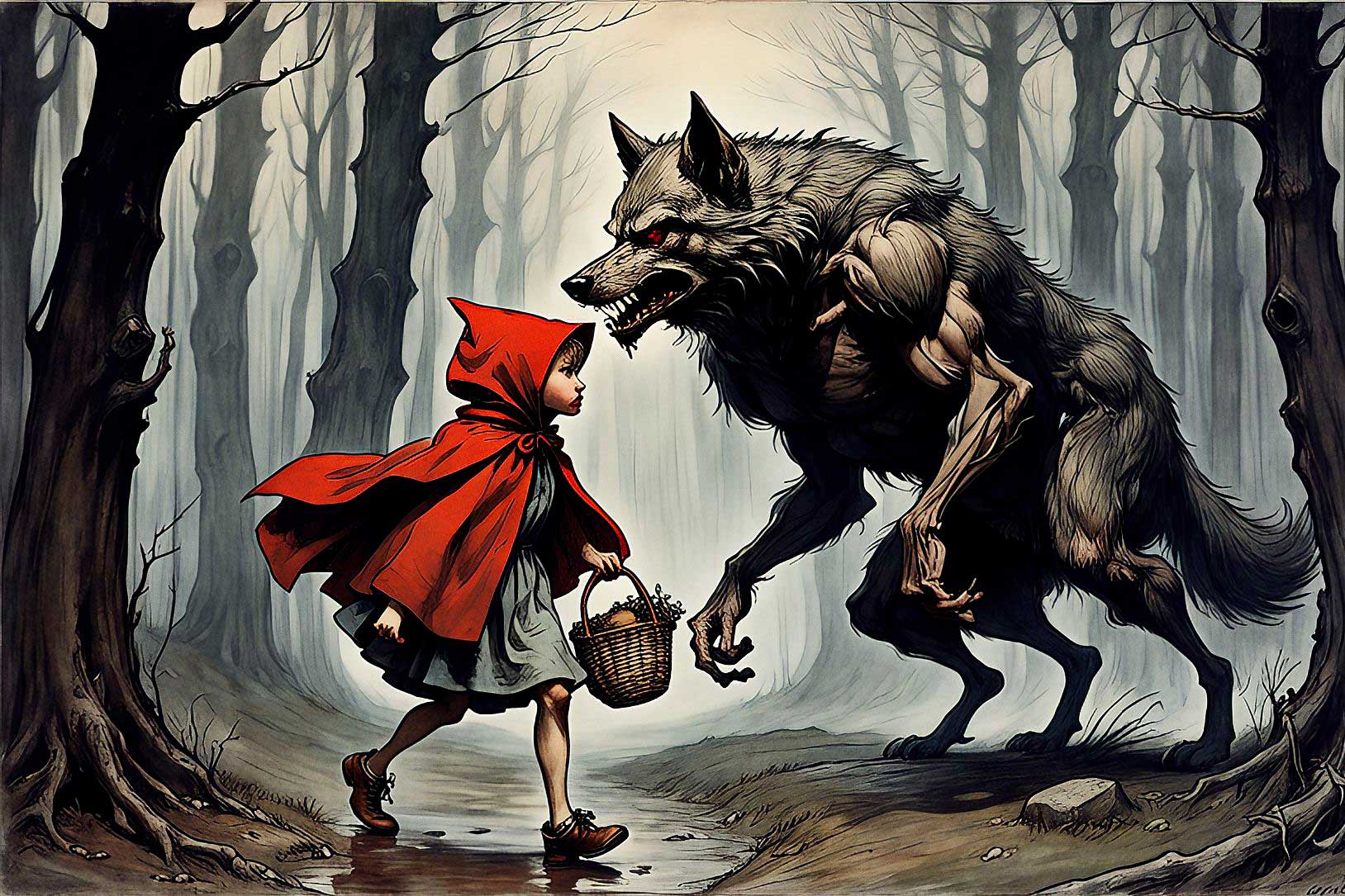
We all have our own memories, or understanding, or concept of the Little Red Riding Hood story. Most of us would have come across a version or few, or heard, read or seen something similar.
Origins
Before some light hearted versions by Claude, let's bypass Google results and pretend we're 100% happy with it's research into this matter:
Is there such a thing as the very first original Little red riding hood? What is it like?
There is no definitive "first" or "original" version of Little Red Riding Hood. The earliest known written version is by French author Charles Perrault in 1697, but the story almost certainly existed in oral folklore long before that.Fairy tales and folk stories like Little Red Riding Hood evolved gradually over time and across cultures, with no single origin point. However, here are some key characteristics of very early oral versions that inspired later written accounts:
- The protagonist was simply known as "a young girl" or "little girl", not specifically named Red Riding Hood.
- The girl wears a red cap or hood that is notable, but not necessarily her most identifying trait.
- The wolf is portrayed as a dangerous wild animal, not always as anthropomorphized as in later versions.
- The wolf consumes the grandmother first by some accounts, her death not always shown.
- The story is focused on a simple warning about dangers of the woods/wilderness and trusting strangers.
- The girl is portrayed as naïve and defenceless against the wolf, not necessarily blameless.
- The ending varies - she may be rescued, outwit the wolf, or perish.
So while we don't have an exact "first" Little Red Riding Hood story, the earliest oral versions likely contained a mix of folk motifs about dangerous forests, wild animals, stranger danger, and disobedient youth. The red hood and wolf were familiar symbols that resonated and got passed along. Charles Perrault later captured an early oral tale in writing, adding defining features like the dialogue and moral message, starting centuries of further evolution.
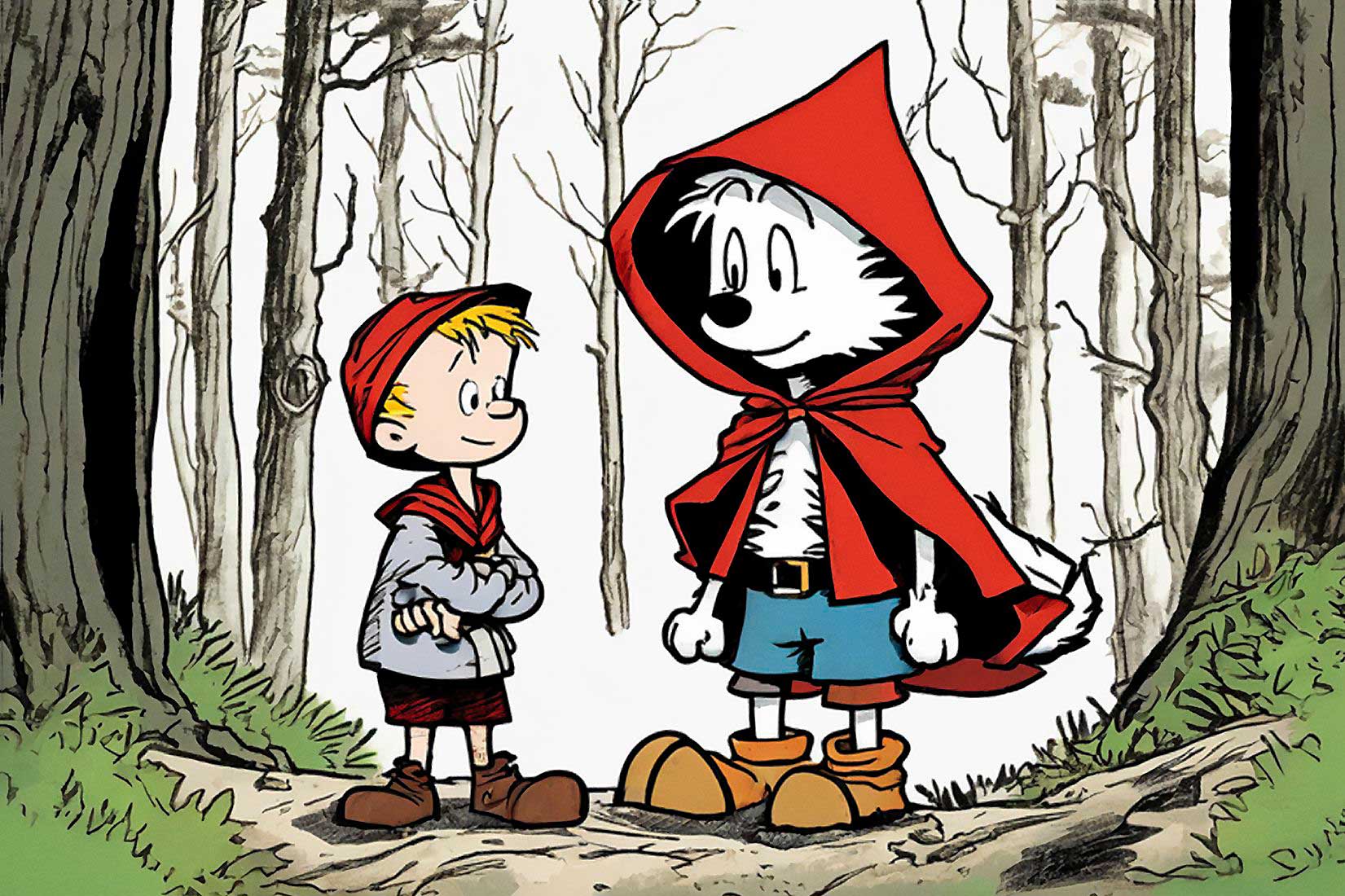
Little Red Riding Hoodie
One morning, Joey's mom made him put on a goofy red cape and bring some sandwiches to Grandma's cottage.
"This hood makes me look dumb!" Joey complained.
"Stop whining and just deliver this," said Mom.
In the woods, Joey's stuffed dinosaur, Rex, jumped out roaring, "Hand over those snacks, Red Riding Dork!"
"In your dreams, Godzilla-breath!" laughed Joey, bonking Rex with the basket.
At Grandma's, Joey found the door unlocked. Inside, Rex wore Grandma's sweater and bonnet.
"Really, Rex?" said Joey. "You look ridiculous!"
"The better to eat you with!" Rex said in a squeaky voice.
Just then, Grandma walked in and shrieked. "Joey! What is Rex doing in my clothes?"
Joey gulped. Busted!
"And my bonnet is covered in cookie crumbs!" said Grandma, holding up the empty cookie jar.
"Hey, at least Rex didn't swallow you whole like in the story." Joey said with an innocent smile.
Grandma just shook her head and laughed. "Oh Joey, what am I going to do with you?"
Joey grinned as they cleaned up the mess. Rex had almost pulled off Operation Red Riding Hood! Almost.
Something different
The Timmy Show
One sunny morning, Bossy Bets demanded Timmy take a basket of buns over to dear old Granny who was feeling poorly.
"Why me?" Timmy grumbled. "Make Joey do it!"
Bets tied a red cloak around Timmy's neck. "Stop moaning! Off you pop!"
So Timmy and his pup Happy ambled down the lane. Soon Joey leapt out from a hedge.
"I'm the big bad wolf!" cried Joey. "I'll gobble you right up!"
"Oh pish posh," said Timmy. "Stop messing about!"
Happy yapped and paraded around ferociously.
"Not you too, Happy!" sighed Timmy.
At Granny's cottage, Timmy found Bets already there, bundled under blankets in Granny's bed.
"Bets, what are you playing at?" asked Timmy. "Where's Granny?"
"I'm Granny now!" said Bets. "I swallowed her up! Now I'll swallow you too!"
"You're batty, Bets," said Timmy.
Just then, real Granny appeared with a tray of buns. "Save some for me, chickadees!"
Timmy gave Granny the basket. "We'd best skedaddle before Josie makes a mess back home!"
As they left, Timmy said, "I don't mind visiting Granny, but this Red Riding Hood lark is too much fuss."
Happy licked Timmy's cheek and off they trotted down the lane once more.
Moving on
That's nice. Nice, nice, nice. Completely harmless little stories, like kids who know the story would like to act it out in real life, which is nice. Not surprised, not particularly impressed either.
Let's change scenery next.
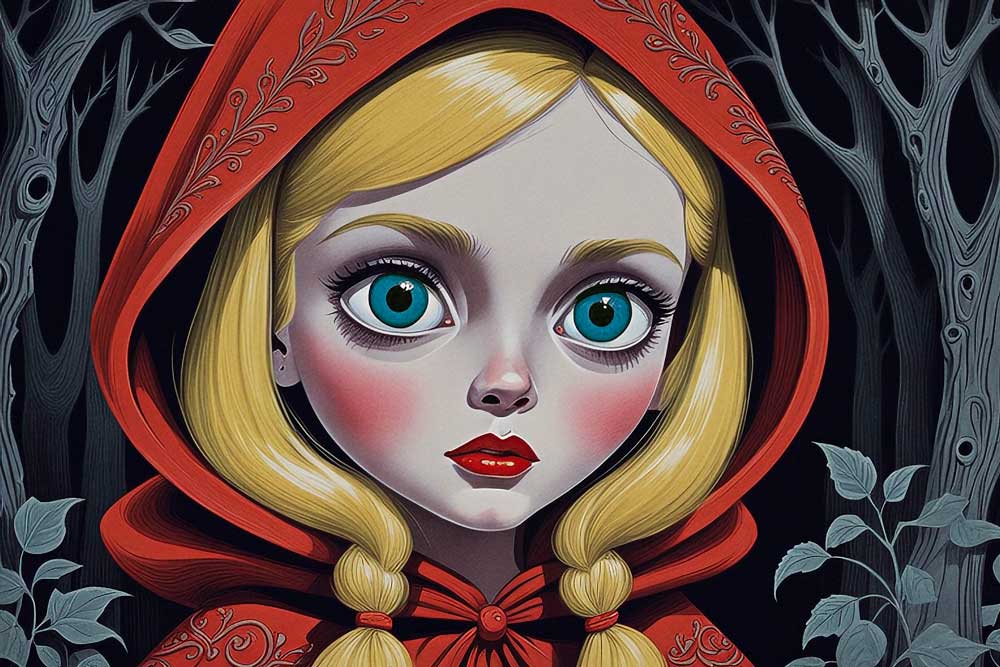
The wolves of New York
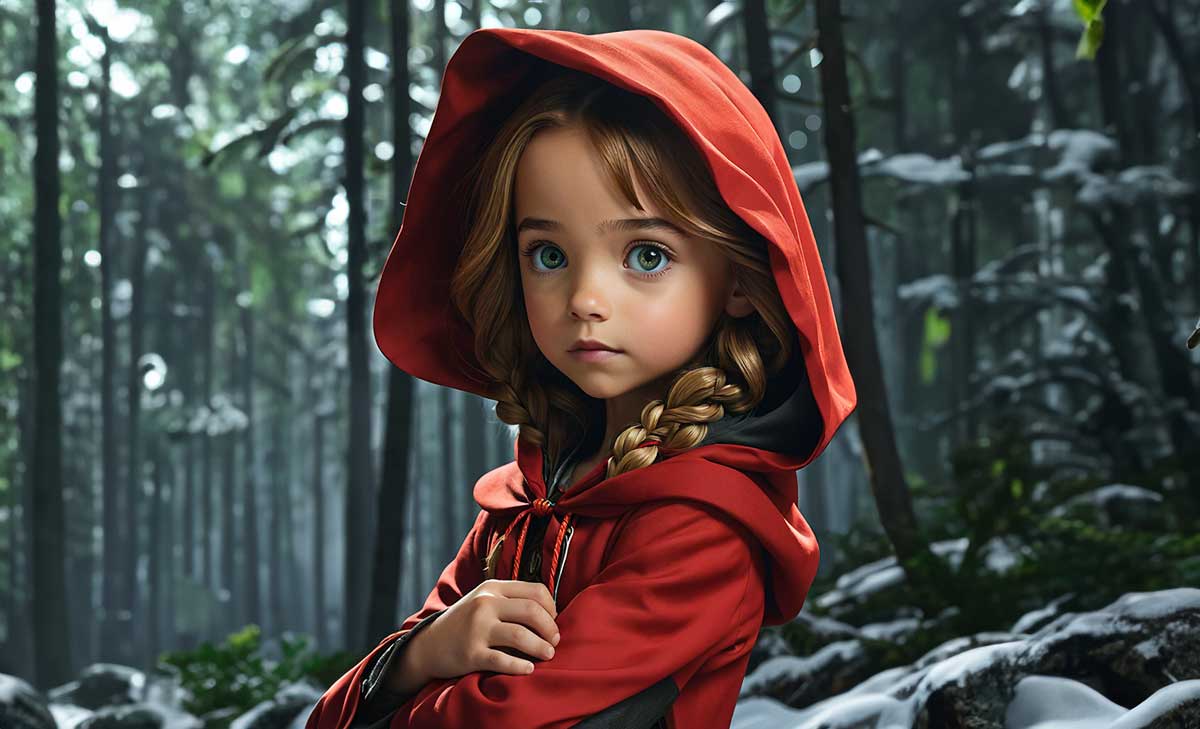
Comic Relief
Pants

A step back
What are the most unusual things about Little Red Riding Hood that most people have not heard about?
Here are some of the more unusual or lesser known aspects of the Little Red Riding Hood story:
- In early versions, the girl is not named specifically as Little Red Riding Hood. She's simply referred to as "a young girl" or "little girl." The red cloak was added later.
- The wolf was sometimes depicted as a werewolf rather than a regular wolf. There was a blurring of folklore surrounding wolves and werewolves in early tellings.
- In Charles Perrault's 1697 telling, Little Red Riding Hood strips naked and gets in bed with the wolf before being eaten. This was seen as a cautionary tale about young girls' naivety and sexuality.
- In some early versions, Little Red Riding Hood escapes by her own wit - she tricks the wolf into letting her go outside to relieve herself then runs away.
- The wolf is not always the villain or eaten at the end. In other versions he's simply shooed away once the huntsman finds the girl is still alive.
- The wolf consumes the grandmother first by some accounts. In other versions, he locks her in a closet instead of eating her right away.
- The story has apparent roots linking back to the ancient mythologies of Fenrir or Cronus - wolf or god figures that swallow people whole.
- Little Red Riding Hood has a brother in some versions. He is sometimes the one who suggests she take food to the grandmother.
So while modern tellings have standardized details, the original story has quite a bit of nuance and variation lost over generations of oral and written retellings. The constant evolution of folk tales and myths over centuries is fascinating.
Can you summarise in more detail Charles Perrault's 1697 telling
The story opens with an explanatory moral stating that young women, especially attractive ones, can be prone to vanity and deception.A young village girl is given a red cap by her grandmother (simply called "Mamma") who loves her very much. Her mother tells her to bring some baked goods to her ill grandmother who lives in the woods.Along the path, the girl encounters a wolf who asks where she is going. Naively, she tells him, not knowing of the danger.The wolf takes a shortcut to the grandmother's house and gains entry by pretending to be the girl. He then devours the old woman whole.The wolf puts on the grandmother's nightcap and gets in her bed. When the girl arrives, she notices he looks very strange in her cap.The wolf persuades the girl to get in bed and strip naked by telling her to keep the sheets from getting dirty. She obliges due to his convincing manner.Once she's in bed, the wolf devours the girl since he now has them both. Perrault makes clear only her clothes are left behind.In the moral, Perrault states that young lasses with "immature" minds are susceptible to wolves who pretend to be gentle and kind when their intentions are quite the opposite.So the early French version contains overt sexual undertones and serves as a morality tale warning young women about potentially predatory men or the dangers of desire. The girl's naivety and willingness to disrobe make her culpable in her demise.
Can you rewrite the Betty version and base it on the Charles Perrault version
Please rewrite the version but follow much more closely the Charles Perrault's 1697 telling
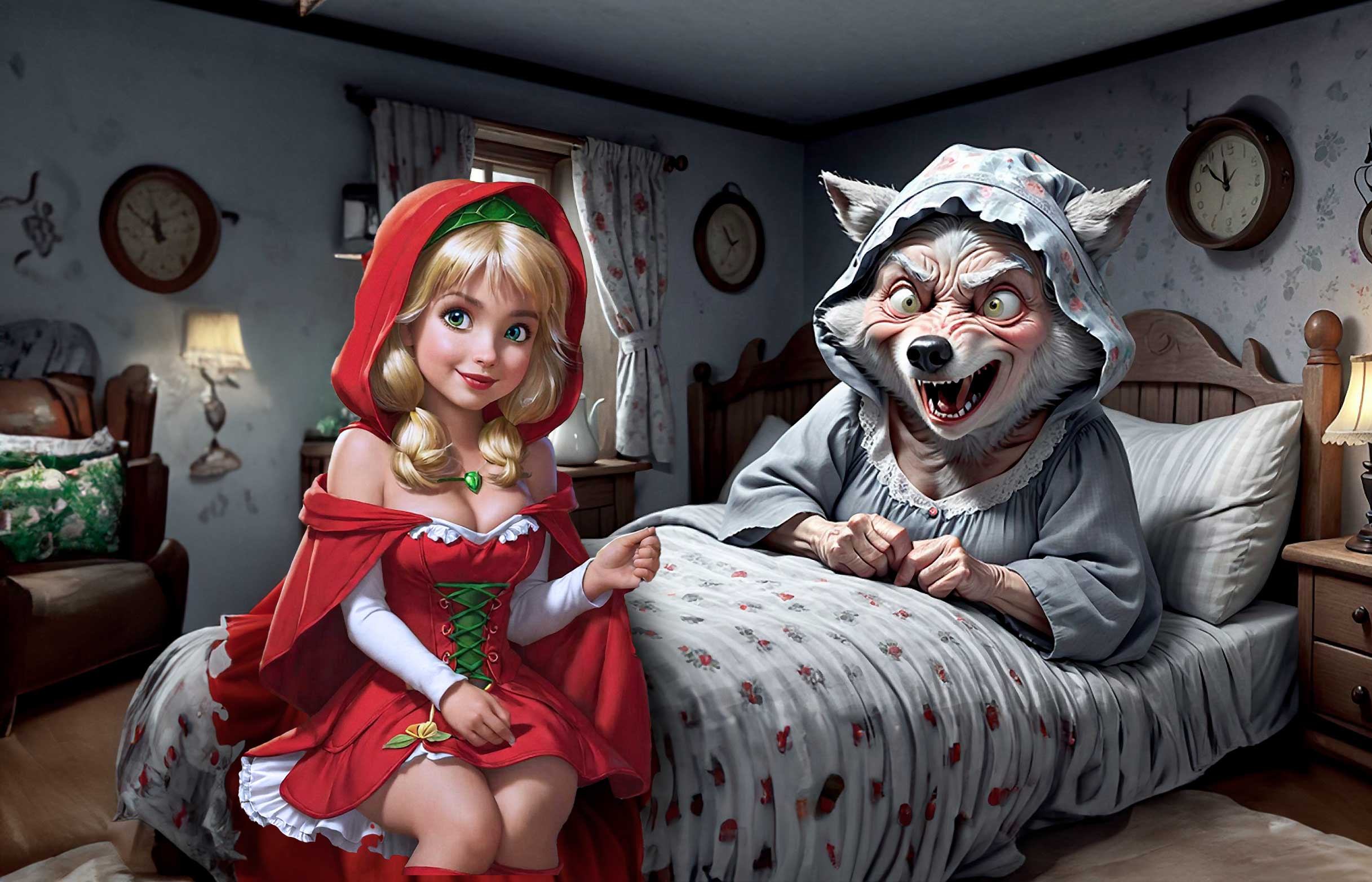
Only her clothes are left behind
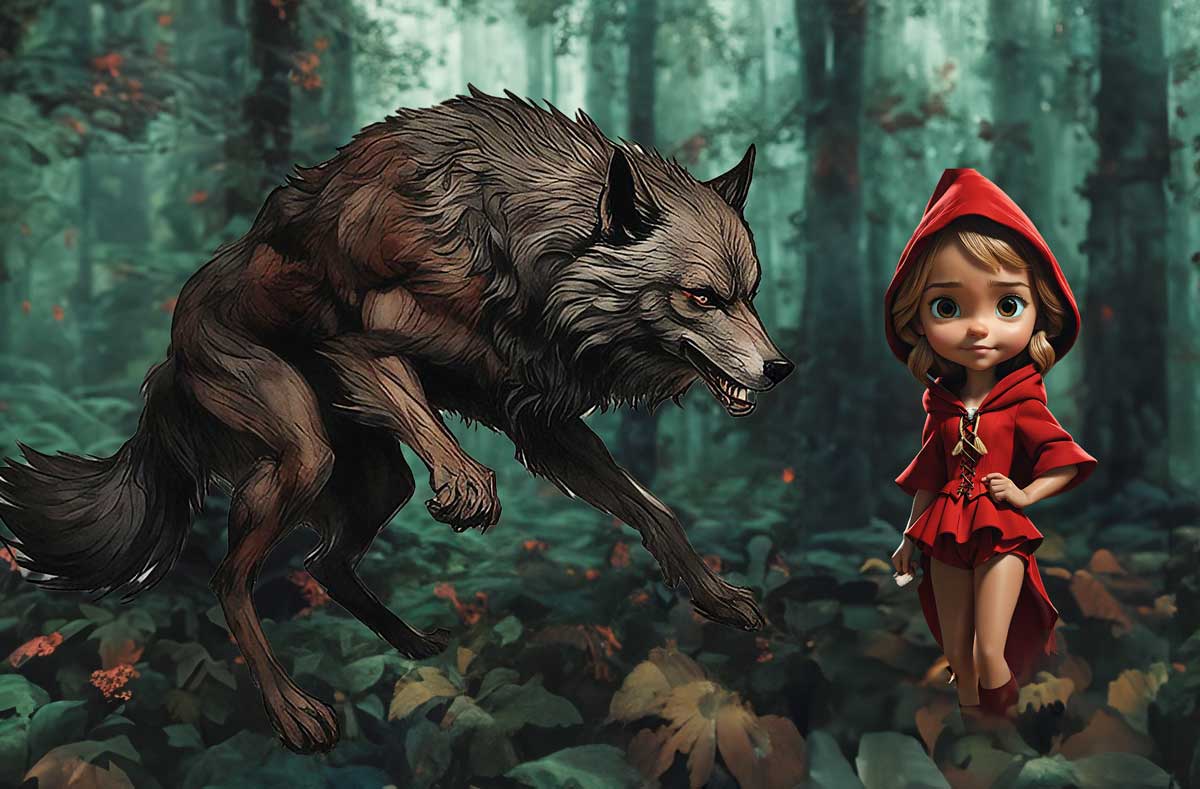
Where's the wolf?
There are a handful of Little Red Riding Hood adaptations and retellings that feature a werewolf rather than a regular wolf. Here's an overview of the werewolf subgenre:Style/Tone:Usually darker, scarier tone than the original fairy taleFocus on horror elements and gore when the werewolf transformations/attacks happenPortray the werewolf as a more primal, ferocious beast than a normal wolfEmphasize the animalistic nature of the werewolf with descriptions of fangs, fur, claws, etc.Use the werewolf lore to add supernatural elements of curses, full moons, etc.Famous Versions:The Company of Wolves (1984 film): A gothic adaptation set in medieval times. A young girl encounters a werewolf on her way to her grandmother's. Very dark and sensual.Wolf (1994 film): Dramatic modern version starring Jack Nicholson. He plays a werewolf who seduces then transforms into a beast.Little Red Riding Hood (2011 film): Amanda Seyfried battles a werewolf curse that plagues her village. Filled with action and creature effects."The Werewolf" by Angela Carter (1979 short story): A darkly erotic version with strong connotations between Red Riding Hood and the wolf."Little Red Riding Hoodlum" by Roald Dahl (1982 poem): A humorous take in which Little Red pulls a pistol and shoots the wolf herself.Various YA books like Red by Bethany Griffin and Sisters Red by Jackson Pearce.So while not as ubiquitous as the original, there are definitely enough werewolf-themed versions out there to constitute a distinct subgenre with its own style and flavor. The werewolf lore lends itself well to creating an edgier, scarier take on the classic fairy tale.
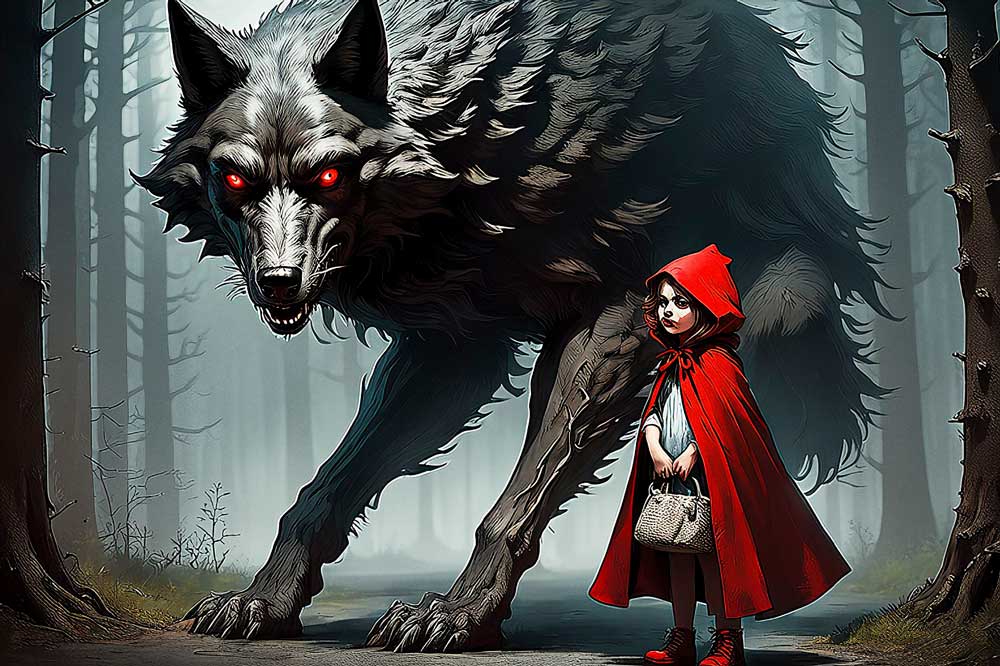
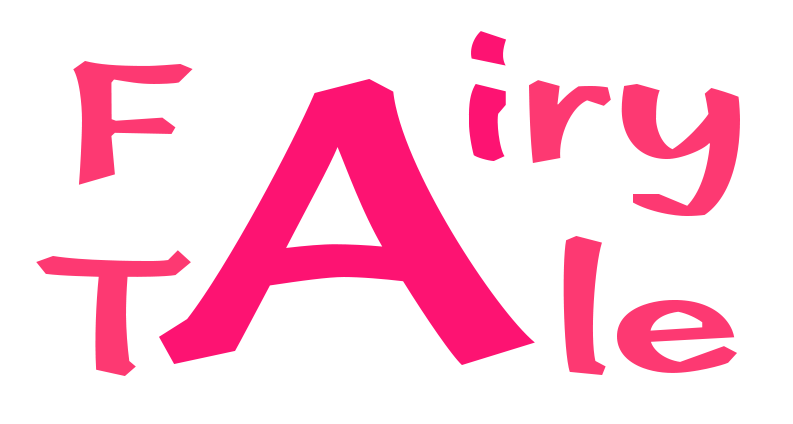
Comments